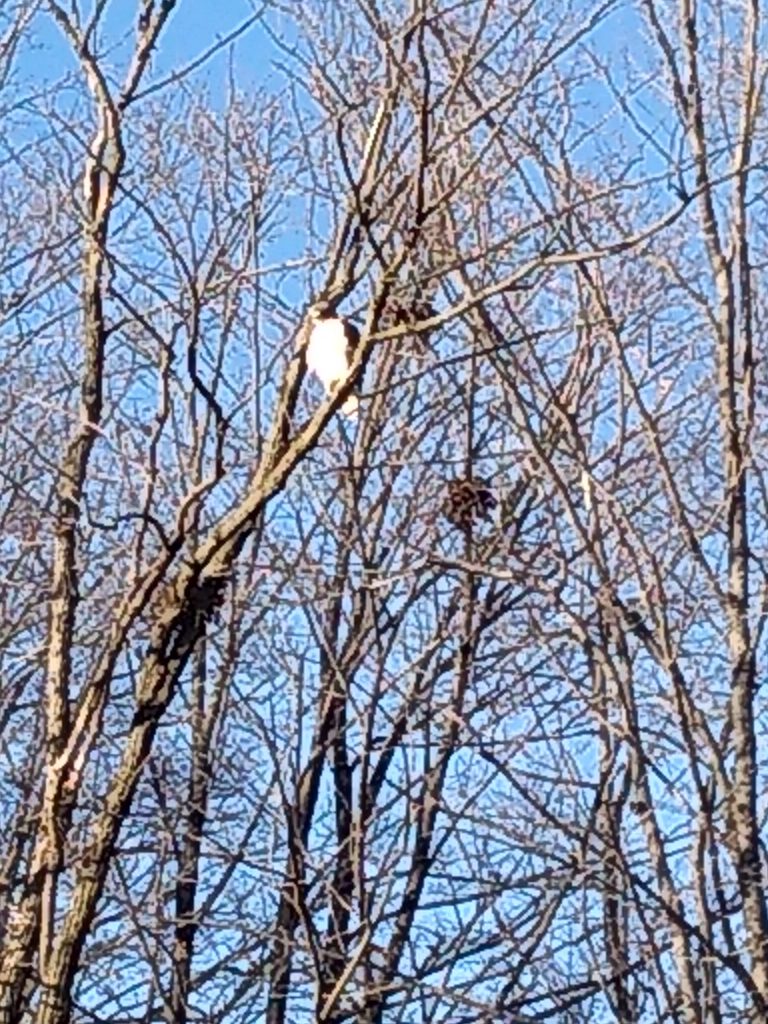November 16, 2020 – West Bend, WI – A woman who lives near Quass Creek in West Bend submitted the photo below wondering if the bird was an osprey.

“This was taken with my phone which doesn’t take the greatest pictures,” said Valery Brussat. “But wondering if you would agree this is one of two osprey at our house.”
Brussat said she is not far from Quass Creek and there is a small pond nearby as well that feeds into the Milwaukee River.
Each year Riveredge Nature Center in Saukville conducts a bird count.
An article from 2016 noted an increase in the number of bald eagles and osprey.
“Birders also saw seven bald eagles, the highest number ever, in our count circle. Three of them (a family of two adults & one immature) were sighted feeding together on a carcass in the Little Kohler area. Jeannie Lord, owner of Pineview Rehabilitation Center, stated that there was an active nest near the river this past summer.
“The Natural Heritage Conservation Program has been conducting aerial surveys over Wisconsin for the past 42 years in search of eagle and osprey nests. In 2015 they found a record number of 1,465 eagle nests, at least one nest in every county except Milwaukee and Kenosha. Nationally, eagles and ospreys have made a big comeback since the use of DDT was outlawed in this country in the 1970’s.”
The DNR said osprey return to Wisconsin between early April and mid-May.
“Eggs are laid one to three days after nest completion, and incubation begins immediately
and lasts about 37 days (Steeger et al. 1992). Both sexes incubate eggs, with females
doing a majority during the day (i.e., 70% of time) and all at night. The male supplies
food to the female during incubation and incubates while the female feeds nearby
(Poole 1989).
Eggs hatch asynchronously in the order they were laid. Young fledge after 50 days, but continue to rely on parents for food during the next 10-20 days, and can remain in the nest area eight to ten weeks after fledging (Poole et al. 2002). Fall migration begins in mid-August and peaks in September with few Ospreys remaining in Wisconsin by October 31 (Woodford, unpublished data)”








I would say that is a red tail hawk from the looks of that picture.
You decide (copy and paste): Red Tail Hawk:
https://2.bp.blogspot.com/_Jqc3hK6pKng/TQwToN6bIhI/AAAAAAAARbs/I5m-ayzHfRg/s1600/SCC%2Bred%2Btail%2B2.JPG
Osprey: https://bioexpedition.com/wp-content/uploads/2012/04/Osprey_Pandion_Haliaetus_2_600.jpg